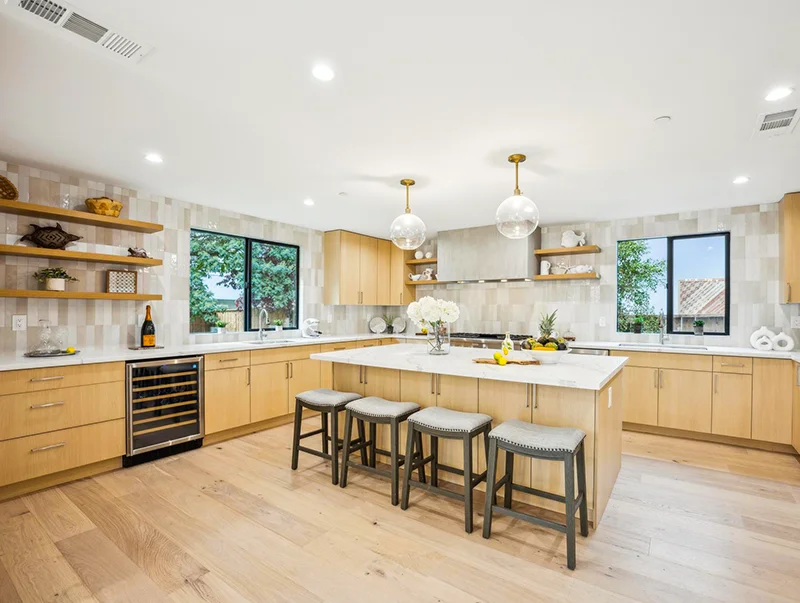Sacramento’s booming real-estate market and Northern California’s high standards make construction projects both exciting and challenging. Whether you’re renovating a restaurant in Midtown or expanding your Elk Grove ranch-style home, solid upfront planning is critical. Global Arch Construction has steered hundreds of clients through this process. Below are the practical steps we’ve seen differentiate smooth, on-time projects from stressful, over-budget ones.
1. Clarify Vision and Scope
Before you gather bids or sketch floorplans, get crystal-clear on why you’re building and what success looks like.
For homeowners: Is your goal increased living space, higher resale value, or improved energy efficiency? Prioritize features—an open-concept kitchen might outrank a high-tech media room if family gatherings drive your decision.
For businesses: Tie the project to measurable outcomes—more retail display, better employee flow, or additional clinic rooms.
Pro tip: Write a short “project charter” with objectives, must-haves, nice-to-haves, and deal-breakers. This document keeps everyone focused when trade-offs arise.
2. Establish a Realistic Budget (and Contingency)
Sticker shock derails more projects than design disputes. Work with your contractor or architect to create a total project budget: direct construction costs, permit fees, design fees, and a contingency reserve (10–20 percent) for unforeseen conditions like hidden water damage or supply-chain price spikes.
Budgeting early also prompts smart decisions: designing to standard material sizes, avoiding excessive structural changes, and phasing upgrades if cash flow is tight.
3. Navigate Permits and Codes Without Headaches
California’s building codes evolve constantly—Title 24 energy regulations, CALGreen sustainability rules, seismic standards, ADA accessibility, and local design guidelines. In Sacramento City alone, a kitchen remodel may require:
- Building permit
- Electrical permit
- Plumbing permit
- Energy compliance forms
- Waste-management plan for debris recycling
Businesses might add fire-sprinkler review or health-department sign-off (for restaurants). A seasoned contractor pre-checks each requirement, submits complete “plan-check” drawings, and responds quickly to city comments, shaving weeks off your schedule.
4. Build the Right Team
Hiring decisions shouldn’t rely on the lowest bid alone. Look for:
- Licensing and Insurance: Verify CSLB (Contractors State License Board) numbers and liability/workers’-comp coverage.
- Relevant Experience: A contractor who excels at suburban ADUs may not be ideal for a LEED-certified commercial remodel downtown.
- Communication Style: Do they provide weekly updates? Are you comfortable asking questions?
- Transparent Contracts: Contracts should outline payment milestones, change-order procedures, and who handles permits.
At Global Arch, we invite clients to visit an active jobsite, so they see our organization, cleanliness, and crew professionalism firsthand.
5. Pre-Construction Kickoff: Setting Expectations
Once contracts are signed, a kickoff meeting aligns stakeholders—owners, designers, site supervisor, key subs. Topics include:
- Final scope review
- Permitting status
- Project schedule and milestones
- Site logistics (parking, deliveries, dust control)
- Communication cadence
- Safety and neighbor-impact measures
Preparing neighbors or tenants with project timelines and contact information often prevents complaints that delay inspections.
6. During Construction: Communicate and Adapt
Even the best-planned jobs encounter surprises: a weather-related delay, a back-ordered light fixture, or an owner-inspired design tweak. What matters is transparent communication:
- Weekly progress reports with photos
- Updated schedule showing impacts
- Prompt change-order pricing
- Collaborative solutions (e.g., alternative tile in stock locally)
Clients who stay informed and decisive keep momentum strong. We encourage regular site walks so you can touch finishes, verify dimensions, and celebrate milestones.
7. Quality Control and Closeout
Quality is built—literally—into everyday tasks: framing checks, moisture readings, electrical inspections. Toward completion, your contractor should manage:
- Punch-list walks to catch any blemishes
- Final inspections and sign-offs
- System tutorials (HVAC, solar, smart controls)
- Delivery of warranties and maintenance guides
A smooth closeout leaves you confident your new space will perform for years.
Conclusion
Planning doesn’t guarantee perfection, but it dramatically increases the odds of an on-time, on-budget, stress-free construction experience. From defining vision to closing out permits, Global Arch Construction leads Sacramento homeowners and business owners through every step. If you’re ready to plan your next project the smart way, schedule a complimentary planning session with our team.




